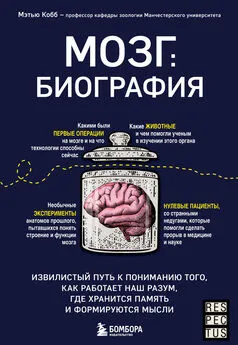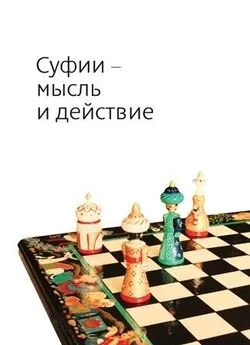Барбара Тверски - Ум в движении [Как действие формирует мысль] [litres]
- Название:Ум в движении [Как действие формирует мысль] [litres]
- Автор:
- Жанр:
- Издательство:Литагент Альпина
- Год:2020
- Город:Москва
- ISBN:978-5-0013-9354-2
- Рейтинг:
- Избранное:Добавить в избранное
-
Отзывы:
-
Ваша оценка:
Барбара Тверски - Ум в движении [Как действие формирует мысль] [litres] краткое содержание
Книга известного когнитивного психолога Барбары Тверски посвящена пространственному мышлению. Это мышление включает в себя конструирование «в голове» и работу с образами в отношении не только физического пространства, но и других его видов – пространств социального взаимодействия и коммуникации, жестов, речи, рисунков, схем и карт, абстрактных построений и бесконечного поля креативности. Ключевая идея книги как раз и состоит в том, что пространственное мышление является базовым, оно лежит в основе всех сфер нашей деятельности и всех ситуаций, в которые мы вовлекаемся.
Доступное и насыщенное юмором изложение серьезного, для многих абсолютно нового материала, а также прекрасные иллюстрации привлекут внимание самых взыскательных читателей. Они найдут в книге как увлекательную конкретную информацию о работе и развитии пространственного мышления, так и важные обобщения высокого уровня, воплощенные в девять законов когниции.
Ум в движении [Как действие формирует мысль] [litres] - читать онлайн бесплатно ознакомительный отрывок
Интервал:
Закладка:
Olivola, C. Y., & Todorov, A. (2010). Elected in 100 milliseconds: Appearance-based trait inferences and voting. Journal of Nonverbal Behavior , 34(2), 83–110.
Todorov, A. (2017). Face value . Princeton, NJ: Princeton University Press.
Todorov, A., Olivola, C. Y., Dotsch, R., & Mende-Siedlecki, P. (2015). Social attributions from faces: Determinants, consequences, accuracy, and functional significance. Annual Review of Psychology , 66, 519–545.
Todorov, A., Said, C. P., Engell, A. D., & Oosterhof, N. N. (2008). Understanding evaluation of faces on social dimensions. Trends in Cognitive Sciences , 12(12), 455–460.
Считывание эмоций с тела
Aviezer, H., Bentin, S., Dudarev, V. & Hassin, R. R. (2011). The automaticity of emotional face-context integration. Emotion , 11, 1406–1414.
Aviezer, H., Trope, Y. & Todorov, A. (2012). Body cues, not facial expressions, discriminate between intense positive and negative emotions. Science , 338, 1225–1229.
Aviezer, H., Trope, Y., & Todorov, A. (2012). Holistic person processing: Faces with bodies tell the whole story. Journal of Personality and Social Psychology , 103(1), 20.
Coulson, M. (2004). Attributing emotion to static body postures: Recognition accuracy, confusions, and viewpoint dependence. Journal of Nonverbal Behavior , 28(2), 117–139.
De Gelder, B. (2009). Why bodies? Twelve reasons for including bodily expressions in affective neuroscience. Philosophical Transactions of the Royal Society of London B: Biological Sciences , 364(1535), 3475–3484.
Понимание действия по телу
Downing, P. E., Jiang, Y., Shuman, M., & Kanwisher, N. (2001). A cortical area selective for visual processing of the human body. Science , 293(5539), 2470–2473.
Kourtzi, Z., & Kanwisher, N. (2000). Activation in human MT/MST by static images with implied motion. Journal of Cognitive Neuroscience , 12(1), 48–55.
Liu, J., Harris, A., & Kanwisher, N. (2010). Perception of face parts and face configurations: An fMRI study. Journal of Cognitive Neuroscience , 22(1), 203–211.
Schwarzlose, R. F., Baker, C. I., & Kanwisher, N. (2005). Separate face and body selectivity on the fusiform gyrus. Journal of Neuroscience , 25(47), 11055–11059.
Понимание намерения по взгляду
Sartori, L., Becchio, C., & Castiello, U. (2011). Cues to intention: The role of movement information. Cognition , 119(2), 242–252.
Роль взгляда в понимании события
Hard, B. M., Recchia, G., & Tversky, B. (2011). The shape of action. Journal of Experimental Psychology: General , 140(4), 586.
Mennie, N., Hayhoe, M., & Sullivan, B. (2007). Look-ahead fixations: Anticipatory eye movements in natural tasks. Experimental Brain Research , 179, 427–442. doi:10.1007/s00221–006–0804–0.
Pierno, A. C., Becchio, C., Wall, M. B., Smith, A. T., Turella, L., & Castiello, U. (2006). When gaze turns into grasp. Journal of Cognitive Neuroscience , 18, 2130–2137. doi:10.1162/jocn.2006.18.12.2130.
Sebanz, N., & Frith, C. (2004). Beyond simulation? Neural mechanisms for predicting the actions of others. Nature Neuroscience , 7(1), 5–6.
Понимание намерений младенцами
Brooks, R., & Meltzoff, A. N. (2005). The development of gaze following and its relation to language. Developmental Science , 8(6), 535–543.
D’Entremont, B., Hains, S. M. J., & Muir, D. W. (1997). A demonstration of gaze following in 3- to 6-month-olds. Infant Behavior and Development , 20(4), 569–572.
Sommerville, J. A., & Woodward, A. L. (2005). Pulling out the intentional structure of action: The relation between action processing and action production in infancy. Cognition , 95(1), 1–30.
Sommerville, J. A., Woodward, A. L., & Needham, A. (2005). Action experience alters 3-month-old infants’ perception of others’ actions. Cognition , 96(1), B1–B11.
Места мест в мозге
Epstein, R. A. (2008). Parahippocampal and retrosplenial contributions to human spatial navigation. Trends in Cognitive Sciences , 12(10), 388–396.
Epstein, R., & Kanwisher, N. (1998). A cortical representation of the local visual environment. Nature , 392(6676), 598–601.
Категории сцен
Tversky, B., & Hemenway, K. (1983). Categories of environmental scenes. Cognitive Psychology , 15(1), 121–149.
Совершенство распознавания сцен
Biederman, I. (1972). Perceiving real-world scenes. Science , 177, 77–80.
Epstein, R. A., & Higgins, J. S. (2007). Differential parahippocampal and retrosplenial involvement in three types of visual scene recognition. Cerebral Cortex , 17, 1680–1693.
Greene, M. R., & Fei-Fei, L. (2014). Visual categorization is automatic and obligatory: Evidence from Stroop-like paradigm. Journal of Vision , 14(1), 14.
Madigan, S. (2014). Picture memory. In J. C. Yuille (Ed.), Imagery, memory and cognition (pp. 65–89). New York, NY: Psychology Press.
Potter, M. C., & Levy, E. I. (1969). Recognition memory for a rapid sequence of pictures. Journal of Experimental Psychology , 81, 10–15.
Shepard, R. N. (1967). Recognition memory for words, sentences, and pictures. Journal of Verbal Learning and Verbal Behavior , 6(1), 156–163.
Standing, L. (1973). Learning 10000 pictures. Quarterly Journal of Experimental Psychology , 25(2), 207–222.
Walther, D. B., Chai, B., Caddigan, E., Beck, D. M., & Fei-Fei, L. (2011). Simple line drawings suffice for functional MRI decoding of natural scene categories. Proceedings of the National Academy of Sciences , 108(23), 9661–9666.
Zhou, B., Lapedriza, A., Xiao, J., Torralba, A., & Oliva, A. (2014). Learning deep features for scene recognition using places database. Advances in Neural Information Processing Systems , 27, 487–495.
Слепота к изменениям
Simons, D. J., & Rensink, R. A. (2005). Change blindness: Past, present and future. Trends in Cognitive Science , 9, 16–20.
Категории и черты
Malt, B. C., & Smith, E. E. (1984). Correlated properties in natural categories. Journal of Memory and Language , 23(2), 250.
Tversky, A. (1977). Features of similarity. Psychological Review , 84(4), 327.
Биологическая эволюция
Pagel, M. (1999). Inferring the historical patterns of biological evolution. Nature , 401(6756), 877.
Исправление ошибок в знаниях о мире
Rosling, H., Rönnlund, A. R., & Rosling, O. (2018). Factfulness: Ten reasons we’re wrong about the world – and why things are better than you think . New York, NY: Flatiron Books.
Сцены, действия и события
Hannigan, S. L., & Tippens Reinitz, M. (2001). A demonstration and comparison of two types of inference-based memory errors. Journal of Experimental Psychology: Learning, Memory, and Cognition , 27(4), 931.
Intraub, H. (1997). The representation of visual scenes. Trends in Cognitive Sciences , 1(6), 217–222.
Lampinen, J. M., Copeland, S. M., & Neuschatz, J. S. (2001). Recollections of things schematic: Room schemas revisited. Journal of Experimental Psychology: Learning, Memory, and Cognition , 27(5), 1211.
Owens, J., Bower, G. H., & Black, J. B. (1979). The “soap opera” effect in story recall. Memory & Cognition , 7(3), 185–191.
Tversky, B., & Marsh, E. J. (2000). Biased retellings of events yield biased memories. Cognitive Psychology , 40(1), 1–38.
Гипотезы сильнее восприятия
Bruner, J. S., & Potter, M. C. (1964). Interference in visual recognition. Science , 144(3617), 424–425.
Необъективное восприятие
Hastorf, A. H., & Cantril, H. (1954). They saw a game; a case study. Journal of Abnormal and Social Psychology , 49(1), 129.
Ошибка подтверждения
Ross, L. (1977). The intuitive psychologist and his shortcomings: Distortions in the attribution process. Advances in Experimental Social Psychology , 10, 173–220.
Nisbett, R. E., & Ross, L. (1980). Human inference: Strategies and shortcomings of social judgement . Englewood Cliffs, NJ: Prentice Hall.
Wason, P. C, & Johnson-Laird, P. N. (1972). Psychology of reasoning: Structure and content . Cambridge, MA: Harvard University Press.
Цитата об ошибке подтверждения
Nickerson, R. S. (1998). Confirmation bias: A ubiquitous phenomenon in many guises. Review of General Psychology , 2(2), 211.
Что справедливо для восприятия, справедливо для всех мыслей
Kahneman, D., & Tversky, A. (1996). On the reality of cognitive illusions. Psychological Review , 103, 582–591. http://dx.doi.org/10.1037/0033–295X.103.3.582.
Фейнман о зримости мыслей
Feynman, R. (1988). “What do you care what other people think?”: Further adventures of a curious character . New York, NY: W. W. Norton.
Пространственные схемы
Franklin, N., & Tversky, B. (1990). Searching imagined environments. Journal of Experimental Psychology: General , 119(1), 63.
Представление перспектив других людей
Bryant, D. J., & Tversky, B. (1999). Mental representations of perspective and spatial relations from diagrams and models. Journal of Experimental Psychology: Learning, Memory, and Cognition , 25(1), 137.
Bryant, D. J., Tversky, B., & Franklin, N. (1992). Internal and external spatial frameworks for representing described scenes. Journal of Memory and Language , 31(1), 74–98.
Franklin, N., Tversky, B., & Coon, V. (1992). Switching points of view in spatial mental models. Memory & Cognition , 20(5), 507–518.
Tversky, B. (1991). Spatial mental models. Psychology of Learning and Motivation , 27, 109–145.
Tversky, B., Kim, J., & Cohen, A. (1999). Mental models of spatial relations and transformations from language. Advances in Psychology , 128, 239–258.
Вспоминать, а не смотреть
Bryant, D. J., Tversky, B., & Lanca, M. (2001). Retrieving spatial relations from observation and memory. In E. van der Zee & U. Nikanne (Eds.), Conceptual structure and its interfaces with other modules of representation (pp. 116–139). Oxford, England: Oxford
Когда легче принять чужую перспективу, чем собственную
Cavallo, A., Ansuini, C., Capozzi, F., Tversky, B., & Becchio, C. (2017). When far becomes near: Perspective taking induces social remapping of spatial relations. Psychological Science , 28(1), 69–79. doi:10.1177/0956797616672464.
Читать дальшеИнтервал:
Закладка:
![Обложка книги Барбара Тверски - Ум в движении [Как действие формирует мысль] [litres]](/books/1063976/barbara-tverski-um-v-dvizhenii-kak-dejstvie-formir.webp)
![Барбара Морриган - Сердце, что растопит океан [litres]](/books/1059584/barbara-morrigan-serdce-chto-rastopit-okean-litre.webp)
![Рольф Добелли - Искусство ясно мыслить [litres]](/books/1067492/rolf-dobelli-iskusstvo-yasno-myslit-litres.webp)
![Александр Кондрашов - Жизнь в движении [litres]](/books/1074016/aleksandr-kondrashov-zhizn-v-dvizhenii-litres.webp)
![Мартин Рис - Всего шесть чисел. Главные силы, формирующие Вселенную [litres]](/books/1082236/martin-ris-vsego-shest-chisel-glavnye-sily-formir.webp)
![Джон Гревилл Агард Покок - Момент Макиавелли: Политическая мысль Флоренции и атлантическая республиканская традиция [litres]](/books/1143945/dzhon-grevill-agard-pokok-moment-makiavelli-politi.webp)
![Кира Бег - Король моих мыслей [litres самиздат]](/books/1148970/kira-beg-korol-moih-myslej-litres-samizdat.webp)
![Ива Коде - Мы мыслим… [litres самиздат]](/books/1149538/iva-kode-my-myslim-litres-samizdat.webp)


